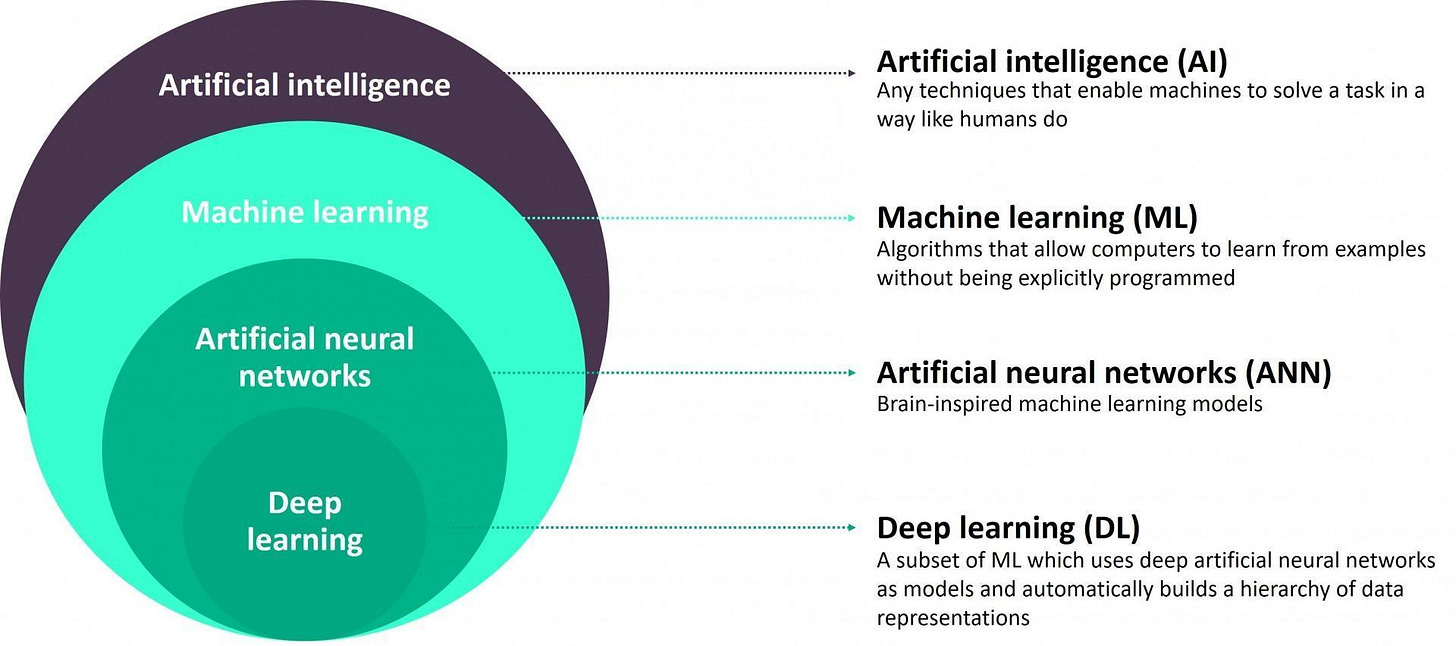Bittensor (TAO) analysis - The decentralization of Artificial Intelligence
Artificial Intelligence has made impressive strides the last few years, but it still has its challenges. Most AI models are costly to develop, lack transparency, and can be quite inefficient. Large tech companies like Google, IBM, OpenAI, and Microsoft have monopolized and invested heavily in AI development, with Google alone spending a significant chunk of its electrical costs on machine learning. The cost to use some of the most advanced AI models, such as GPT-3, can be substantial, costing up to millions of dollars for a single training run.
The current state of AI models is centralized, with only a handful of large corporations possessing the resources and expertise to create the most advanced models. Control of data sets between only a few organizations vastly limits the flow of consensus and restricts the accuracy, diversity, and speed at which machine learning models mature. Furthermore, new AI models often have to relearn everything that the previous models already learned, which can be a time-consuming and inefficient process. This is because AI research is doubling every year, creating a constant need to refine and update existing models.
Thanks to the rise of neural networks, the world of artificial intelligence has undergone a transformative shift, giving computers the ability to analyze and process data in ways that were once deemed impossible.
Bitcoin invented the concept of “Digital Trust” and the ability for several computers around the globe to reach consensus on something. Thanks to Bitcoin we have a decentralized means to reward participation and maintenance of networks. Bitcoin network is actually, by far, the largest aggregation of computing power in the world. It is greater than the top 500 supercomputers combined. But, this computing power is wasted because Proof-of-Work on Bitcoin network does nothing other than solving a puzzle and rewarding the miners who solves it in BTC. But what if we could use that computing power to train AI models and evaluating knowledge?
Enter Bittensor - the world's first fully functional, decentralized machine learning network. An open-source protocol that powers a decentralized, blockchain-based machine learning network and rewards participants who contribute knowledge to the network.
Bittensor started as an idea in 2016, then the first paper was published in 2020 and mainnet was launched in November 2021.
Jacob Steeves and Ala Shaabana CO-founded Bittensor. They both have great academic backgrounds and working experience in the sector, working for Google and IBM. Jacob Steeves calls it ‘a continues machine learning library’. This library is accessible for everyone in a truly decentralized manner and will accelerate the adoption of AI.
Bittensor's vision is to create a pure market for artificial intelligence, an incentivized arena in which consumers and producers of this valuable commodity can interact in a trustless, open and transparent context.
Bittensor enables:
A novel, optimized strategy for the development and distribution of artificial intelligence technology by leveraging the possibilities of a distributed ledger. Specifically, its facilitation of open access/ownership, decentralized governance, and the ability to harness globally-distributed resources of computing power and innovation within an incentivized framework.
An open-source repository of machine intelligence, accessible to anyone, anywhere, thus creating the conditions for open and permission-less innovation on a global internet scale.
Distribution of rewards and network ownership to users in direct proportion to the value they have added.
The goal is to create a network on which information compounds, which means a new model doesn’t have to relearn everything a previous version of the same model already learned. When using the bittensor network there is also a value transfer from other models that don’t exist in a centralized AI silo. The new model is basically learning from all the models and their data available in the neural network.
With current models you can’t contribute to the model itself if you are not part of the company’s team. And the massive costs to run and train the models require that the network is gated and not open. You can only get access via APIs and with some limits.
With Bittensor, there is no need for relying on some employees or researchers at some big corporations anymore. Now everyone can contribute to and earn financial rewards in return. The idea is that models on Bittensor learns off each other, this helps increase the diversity of the models and makes them to be more robust. That way anyone can build an AI-based application on top of Bittensor in a much more efficient way.
Imagine you are training a model on how to recognize dog and you are located in Asia, you can also get your model exposed to a dataset of dogs from Africa, Europe etc. and now your model is more robust.
Tokenomics
TAO is the native coin of the network. Bittensor did a fair launch, with no ICO, no pre-mined coins, no team allocation. The team started mining TAO with everybody else.
TAO is also the governance token and incentive mechanism for the network. The tokenomics are inspired by Bitcoin and supply follows the same curve. The max supply of TAO is 21 million tokens and every 4 years there is a halving event (the first one in 2025). The current issued supply is ~4.2 million TAO. Full dilution on TAO will take over 100 years, just like BTC schedule.
Machine learning models train collaboratively and are rewarded in TAO according to the informational value they offer the collective. TAO also grants external access, allowing users to extract information from the network while tuning its activities to their needs.
Keep reading with a 7-day free trial
Subscribe to Understanding the Crypto Economy to keep reading this post and get 7 days of free access to the full post archives.





